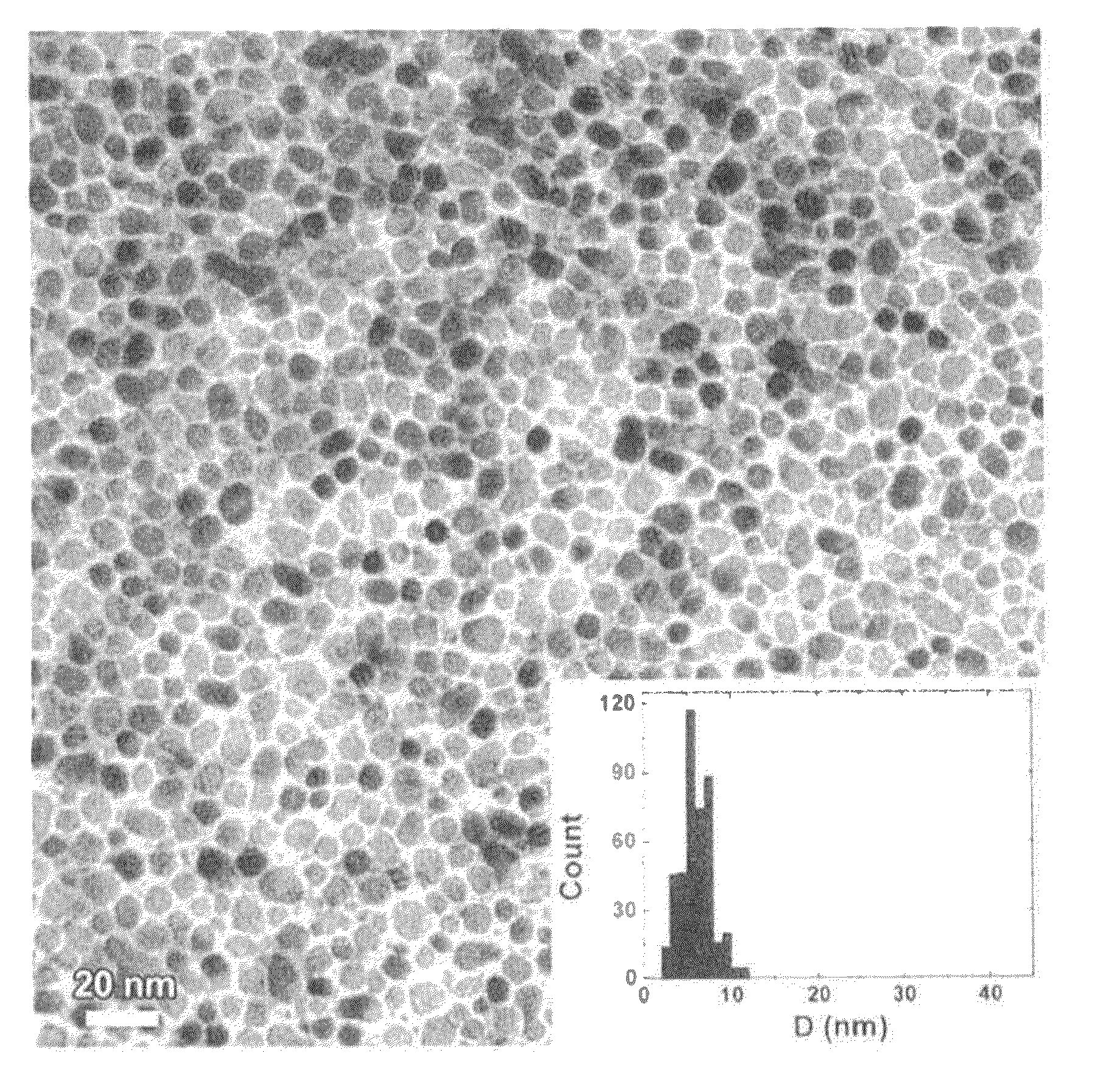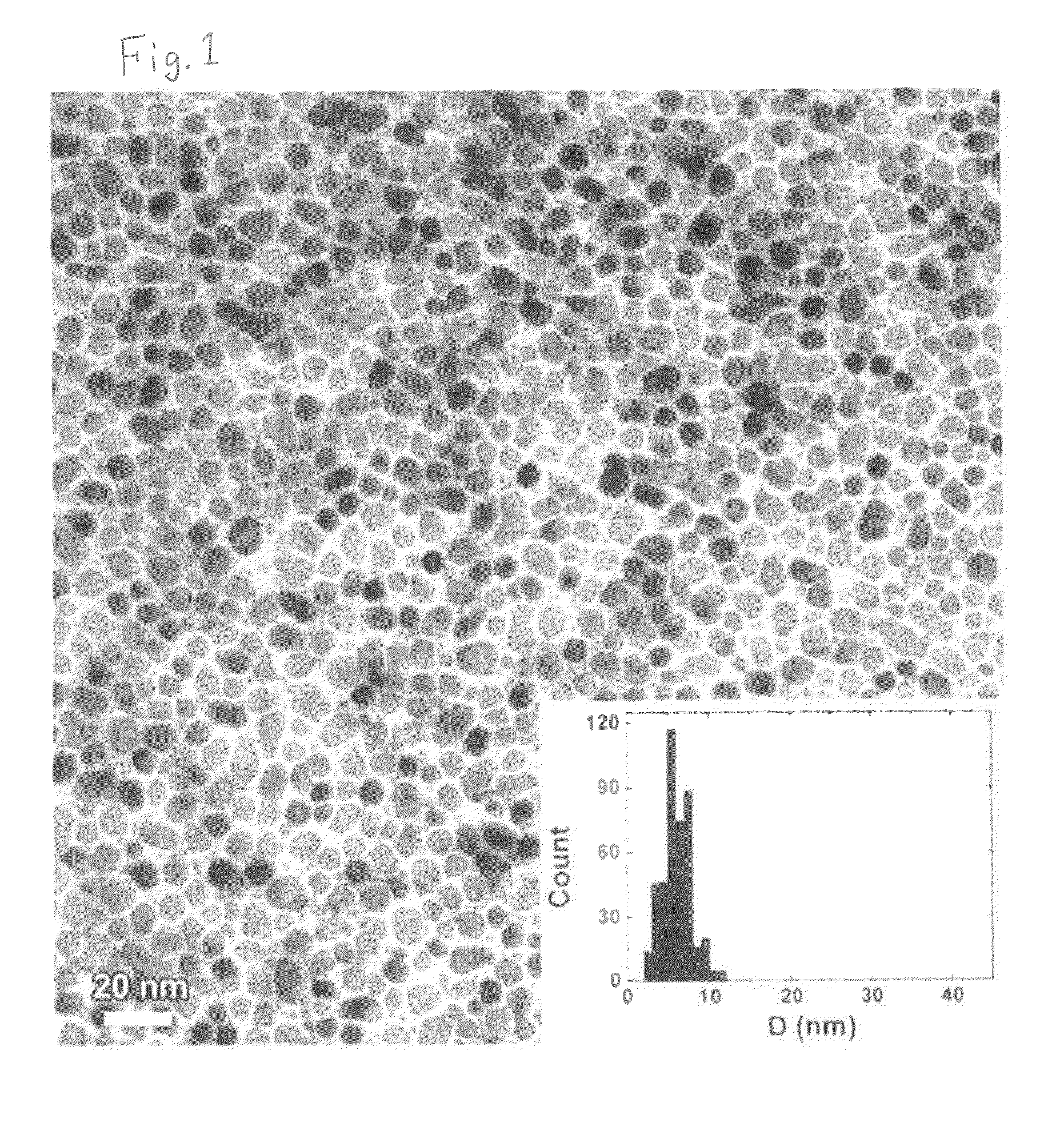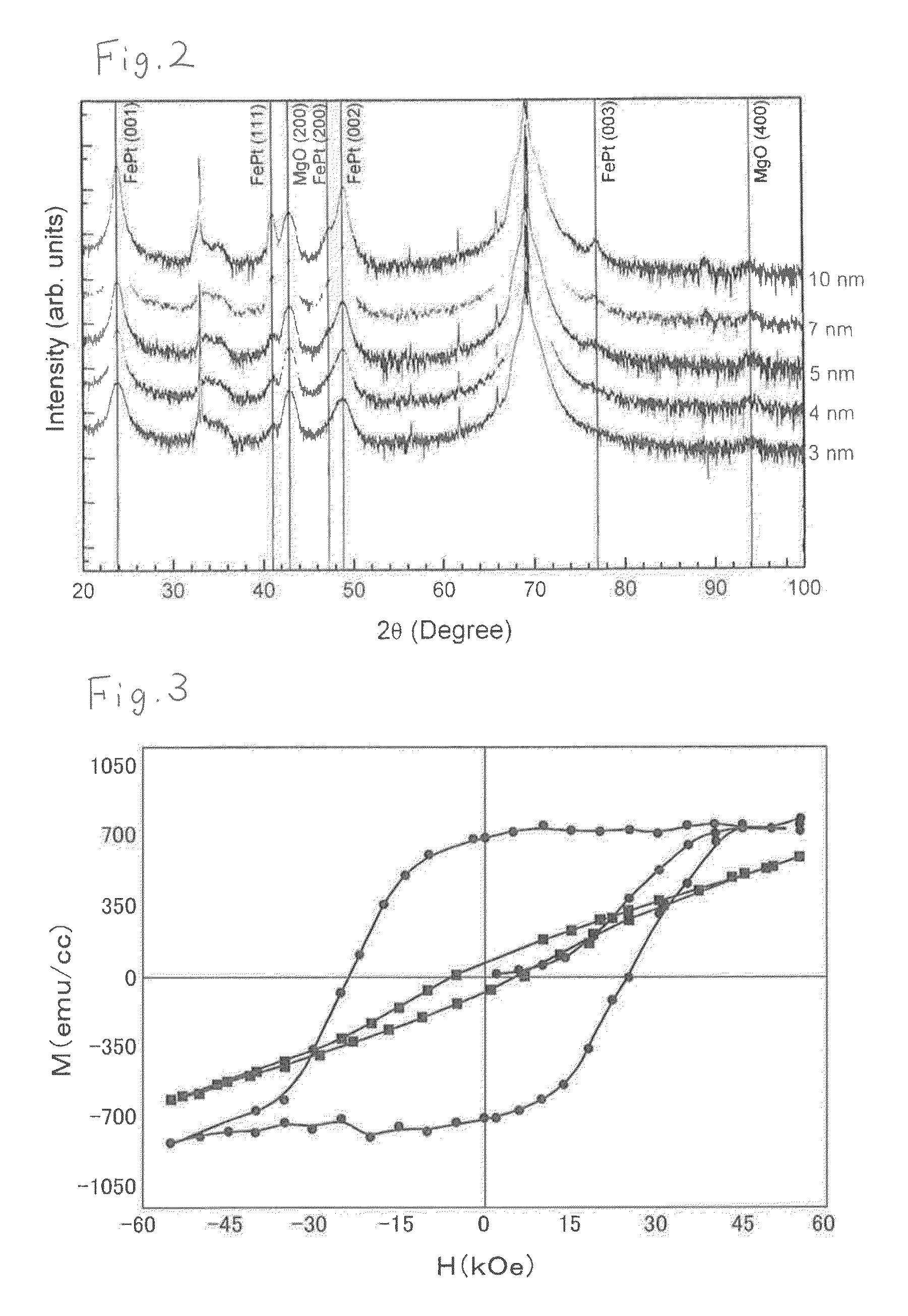Perpendicular magnetic recording medium and its manufacturing method
a technology of magnetic recording medium and manufacturing method, which is applied in the field of perpendicular magnetic recording medium, can solve the problems of deterioration in the magnetic properties and recording/reproducing characteristics of the medium, coarse particles, and uneven particle size of granular films, so as to suppress the disturbance of crystal orientation, improve the microstructure of the orientation control layer, and increase the ultra-high recording density
- Summary
- Abstract
- Description
- Claims
- Application Information
AI Technical Summary
Benefits of technology
Problems solved by technology
Method used
Image
Examples
example 1
[0073]A nonmagnetic and heat resistant disk-shaped glass substrate having a diameter of 65 mm was prepared, and a SiO2 layer of 2 nm was formed as a seed layer on the glass substrate at a room temperature by sputtering. Note that the formed SiO2 layer was amorphous (noncrystalline).
[0074]Here, the substrate having up to the seed layer formed thereon was heated to reach 100° C. (substrate surface temperature) in a chamber and a MgO layer of 10 nm was formed as an orientation control layer on the seed layer by sputtering.
[0075]Here, the substrate having up to the orientation control layer formed thereon was heated to reach 450° C. (substrate surface temperature) in the chamber and 50 (90 (50Fe-50Pt)-10Ag)-50C was formed as a granular magnetic layer (perpendicular magnetic recording layer) on the orientation control layer by sputtering. Note that the film thickness of the granular magnetic layer was changed in a range of 3 nm to 10 nm.
[0076]Perpendicular magnetic recording media of Exa...
example 2
[0084]80Fe-8Ta-12C of 200 nm was formed as a soft magnetic layer on a glass substrate of Example 1 at a room temperature by sputtering.
[0085]Subsequently, similar to Example 1, a SiO2 layer as a seed layer, a MgO layer of 10 nm as an orientation control layer, and 50 (90 (50Fe-50Pt)-10Ag)-50C of 10 nm as a granular magnetic layer (perpendicular magnetic recording layer) were successively formed on the soft magnetic layer. Note that the film thickness of the seed layer was changed to three values of 1 nm, 2 nm and 4 nm.
[0086]Perpendicular magnetic recording media of Example 2 were obtained by the above manufacturing process.
[0087]FIG. 5 shows an X-ray diffraction pattern of the FePtAg—C granular magnetic thin film in Example 2. It can be understood that, by inserting the SiO2 seed layer on the FeTaC soft magnetic film, MgO undergoes (001) orientation and, as a result, FePt undergoes (001) orientation. Note that Fe (110) in FIG. 5 is caused by the FeTaC soft magnetic film.
[0088]When a...
example 3
[0089]A perpendicular magnetic recording medium of Example 3 was obtained by a manufacturing process similar to that of Example 2 except that the substrate temperature at the time of forming the granular magnetic layer was 380° and the substrate having up to the granular magnetic layer formed thereon was annealed at 450° C. (substrate surface temperature) for 1 hour.
PUM
| Property | Measurement | Unit |
|---|---|---|
| temperature | aaaaa | aaaaa |
| temperature | aaaaa | aaaaa |
| diameter | aaaaa | aaaaa |
Abstract
Description
Claims
Application Information
 Login to View More
Login to View More - R&D
- Intellectual Property
- Life Sciences
- Materials
- Tech Scout
- Unparalleled Data Quality
- Higher Quality Content
- 60% Fewer Hallucinations
Browse by: Latest US Patents, China's latest patents, Technical Efficacy Thesaurus, Application Domain, Technology Topic, Popular Technical Reports.
© 2025 PatSnap. All rights reserved.Legal|Privacy policy|Modern Slavery Act Transparency Statement|Sitemap|About US| Contact US: help@patsnap.com



